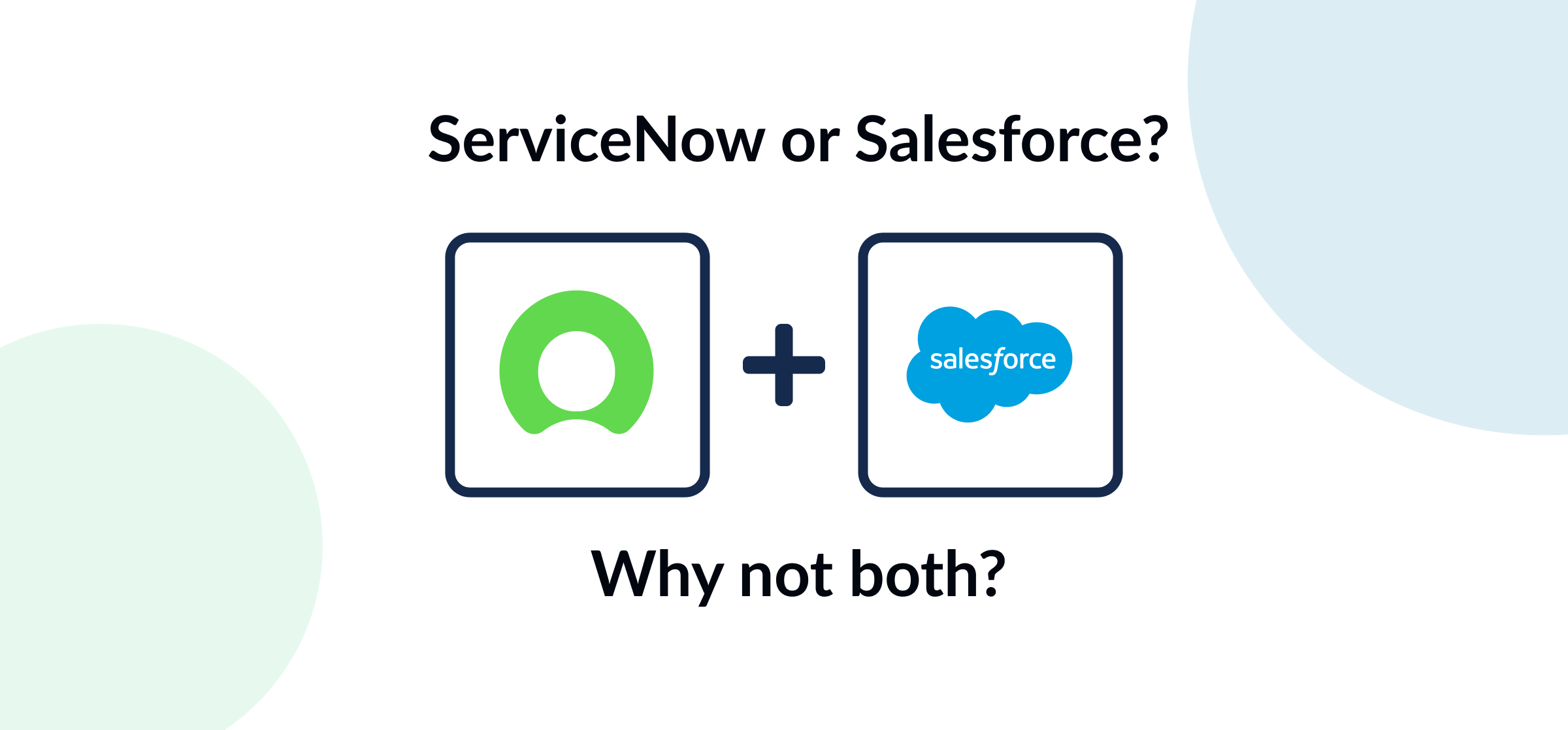Connect Salesforce and ServiceNow: Collaborating Without Compromise
When it comes to enterprise-grade software, it can be challenging to compare and contrast, particularly since the needs of each organization can vary drastically. Are you seeking a better customer service management system? A self service portal for customer queries? A customer relationship management (CRM) solution for your sales team? Or perhaps you’re focused on business growth through optimizing apps across the org, including the software development team or IT department. If you’re interested in all of the above, you may just find that your ideal solution isn’t to answer the debate of ServiceNow vs Salesforce, but to integrate both into a single, united workflow.
This article will guide you through the benefits, practical steps for integration, and key considerations for leveraging a ServiceNow Salesforce integration to boost your business’s customer engagement and operational efficiency.

In this article:
- Salesforce and ServiceNow: An Overview
- What does a Salesforce ServiceNow integration do?
- Customizing Your Integration Experience
- Security and Privacy
- Pricing Structures: Salesforce and ServiceNow
- Maximizing Efficiency with Automation
- The Future of CRM and Service Management
- Navigating Common Challenges in Integration
- Choosing the Right Integration Tool for Your Business
- FAQ: Salesforce and ServiceNow
Summary
Salesforce and ServiceNow offer distinct functionality, although the former can be made to support it teams in a single platform while the latter supports integration capabilities for just about any use case. That said, the traditional implementation of Salesforce is designed to focus on enhancing customer relationships and supporting sales. ServiceNow, meanwhile, is primarily a platform for automating internal operations and IT services.
Integrating Salesforce with ServiceNow can enhance your internal processes with end-to-end customer service and internal processes, particularly through Unito’s 2-way sync and data transfer functionality.
Choosing the right integration tools and strategies is vital to addressing potential challenges such as performance issues and security vulnerabilities, ensuring successful integration outcomes like improved customer relations and streamlined internal workflows.
Salesforce and ServiceNow: An Overview
Salesforce and ServiceNow have each carved their niche, offering a unique set of features and functionalities that cater to different business needs. At the same time, both have expanded and extended their offerings to bring in a wider range of customers through modular add-ons and integrations.
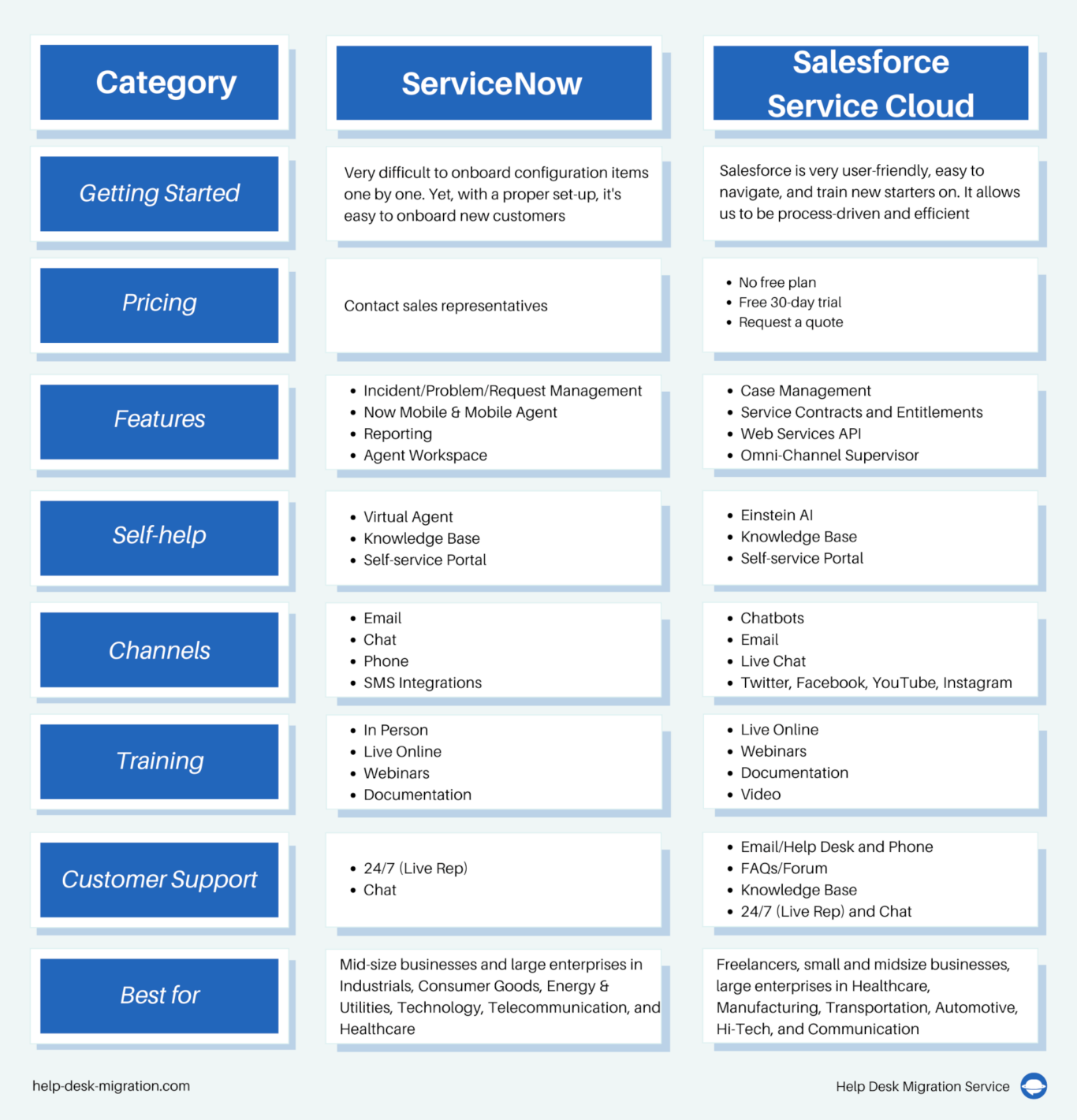
Customer service management in a box
The Salesforce platform’s core functionalities lie in managing customer interactions, contacts, a sales and marketing team, underscored by a range of additional supporting tools, known as “clouds” for contact and lead management, sales pipeline management, and customizable dashboards. Each cloud is modular and can be seen as an add-on, or a versatile all-in-one solution depending on your needs.
Streamlined IT service management
On the other hand, ServiceNow’s core functionalities center on automating ops for business users with modules that cover service level agreements, incident management, and asset management. ServiceNow streamlines internal workflows using a single data model to ensure data consistency and streamlined processes throughout all solutions on its platform.

Salesforce: Service cloud and customer relationship management
Recognized as a leader in cloud-based CRM platforms, Salesforce is strategically designed to foster strong customer relationships by providing a 360-degree view of customers, ensuring that the sales team, service, and marketing teams have the insights needed to engage effectively.
Most commonly considered for sales and marketing, customer service departments, and organizations intent on maximizing their use of a quality CRM, Salesforce Sales cloud is the original product. But Service Cloud was the follow-up that expanded the traditional focus to the customer experience by expanding the CRM system to cover personalized communication, customer information, order management, and more.

With the help of the Salesforce data management platform and Salesforce Service Cloud, businesses can further streamline their processes and make data-driven decisions.
ServiceNow: Enhancing IT services in the cloud
Contrasting Salesforce’s customer-centric focus, ServiceNow streamlines internal business processes. This platform is designed to enhance productivity across multiple departments and improve overall IT services management. It employs AI and machine learning to:
automate risk assessment
smart ticket routing
predict success of IT changes
provide AI tools like chatbots
These features optimize the handling of IT issues and enhance user experiences.

ServiceNow offers the following features and capabilities, including a self service portal and service cloud, as part of their service management process and service management tool:
These features give users immediate answers and facilitate the resolution of IT issues without direct IT support staff involvement, thus enhancing organizational productivity. They also contribute to improved IT decision-making.

What does a Salesforce ServiceNow integration do?

Integrating Salesforce with ServiceNow can bring about massive change in the way businesses handle customer service and data sharing. Unito’s 2-way Salesforce ServiceNow integration, for example, supports an automated end-to-end customer journey with updates syncing in real-time.
This approach is optimal for minimizing data-related human error, supporting customer experiences with large scale enterprises through automation, and simplifying data sharing between departments.
Linking Salesforce and ServiceNow eliminates the need for duplicate manual data entry in both ServiceNow and the Salesforce platform.
2-Way Sync for ServiceNow and Salesforce
The ability to transfer data bi-directionally can enhance case management by turning incidents or tickets into Salesforce tasks or opportunities. Teams can then update comments, details, attachments and more from one platform to the other in real-time with automated 2-way updates.
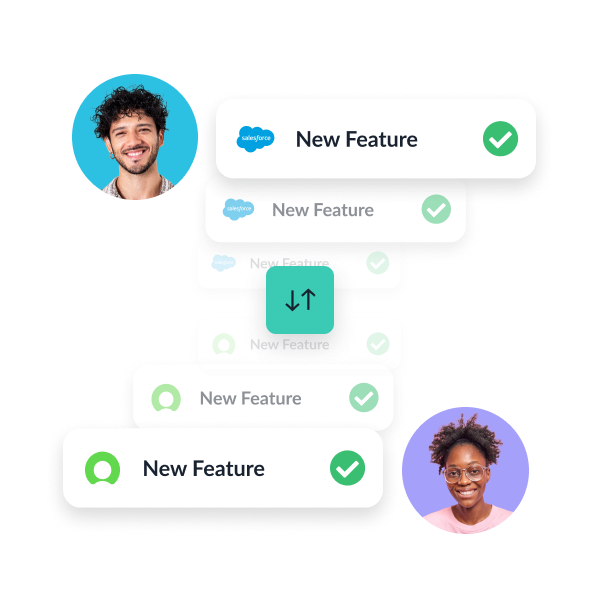
Real-World Integration Scenarios
In a real-world scenario, when a new customer contract is logged in Salesforce, this integration point can automatically prompt the generation of a related work order in ServiceNow, which the services team uses to organize account setup procedures.
The connection between Salesforce and ServiceNow fosters enhanced communication and cooperation among teams, leading to quicker resolution of client issues, uplifted customer satisfaction scores, and a more transparent view of recurring challenges and workflows.
Data sharing between ServiceNow’s service data and Salesforce’s customer engagement metrics enables organizations to refine their service offerings and pinpoint opportunities for developing more effective service strategies. Unito’s platform allows for ongoing two-way sync between Salesforce and ServiceNow, ensuring that updates in tasks, contacts, or opportunities are reflected in both systems in real-time, thus keeping records current and consistent.

Customizing Your Integration Experience
Salesforce and ServiceNow both offer powerful low-code development platforms that enable customization to align with business needs, with Salesforce also allowing code-level modifications for greater specificity. This customization offers benefits in automating processes, syncing functionality, and managing complex integrations. The Now Platform enhances the integration experience with fully customizable forms, fields, and lists, as well as localized information presentation for global users including diverse languages and currencies.
Organizations can enable seamless integration by utilizing the following tools:
Workflow mapping and automation tools such as Unito
Platforms offering intuitive data mapping
Legacy system integration connectors
Unito’s Workflow Mapping
But neither of those platforms specializes in 2-way sync. Only Unito can provide real-time updates bidirectionally for Salesforce and ServiceNow. It allows for the integration and synchronization of updates between ServiceNow and Salesforce, supporting:
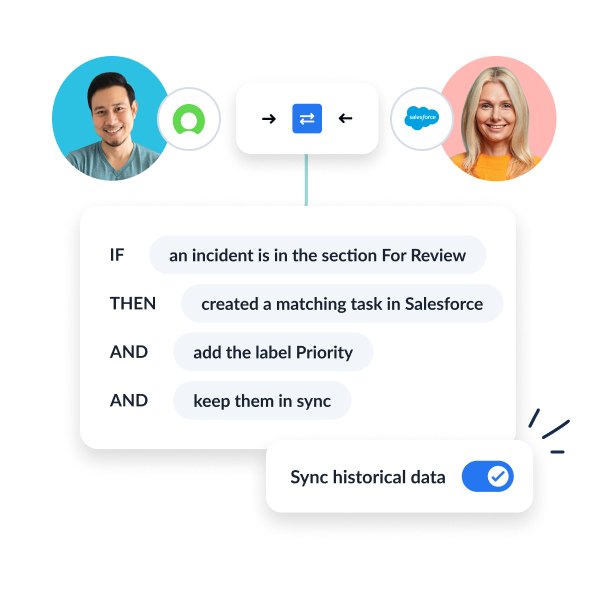
Security and Privacy in Integration
Security and privacy are paramount concerns in any data integration process. Salesforce’s Permission Set security model is designed for granular access control, contributing significantly to the security apparatus in place during data integration with ServiceNow. Furthermore, data is safeguarded by two-fold security which includes protection by Amazon Web Services and by internal servers, ensuring that your data is well-protected during the integration process.
Evaluating the security features of integration tools is crucial; organizations should verify they offer strong encryption, secure APIs, and compliance with industry standards like GDPR or HIPAA. Unito’s security and privacy measures include best-in-class practices and procedures, including SOC 2 Type 2 Certification. These measures ensure that your data is not only secure but also privacy-protected during the integration process.
Pricing Structures: Salesforce and ServiceNow

One critical factor to consider when evaluating the advantages and disadvantages of Salesforce and ServiceNow is their pricing structures. Salesforce provides three primary pricing models:
Basic plans like Service and Sales Cloud Starter Suite begin at $25/month per user.
The ‘Professional edition costs $80/month per user.
Salesforce enterprise plans begin at $165/month per user.
On the other hand, ServiceNow’s pricing is often only quoted by custom request. Though according to Capterra, the basic plan begins at $100/month per user. This does not include implementation costs or license fees, though discounts may apply with factors such as industry, region, company size, and selected products affecting the total implementation cost.
Understanding these pricing structures can help businesses make an informed decision about which platform best suits their budget and needs.
Maximizing Efficiency with Automation

Salesforce automation tools, including Einstein AI or Apex, offer solutions for complexity management, business process automation, and time-saving in case classification and activities.
ServiceNow, in contrast, enhances efficiency by automating routine UI-centric tasks, using out-of-the-box automation solutions and predictive intelligence for incident ticketing and assignment.

Enterprise organizations can reduce the negative impact of bottlenecks by managing complex processes through automation solutions. Examples include Salesforce’s Process Automation Tracker and ServiceNow’s day-to-day operation tools. Future trends suggest a significant role for automation in transforming IT and enhancing CRM, with both Salesforce and ServiceNow positioned to drive change by consolidating services, standardizing processes, and fostering innovation.
The Future of CRM and Service Management
The future of CRM and service management lies in continued innovation and integration. Salesforce’s upcoming integration of Einstein for Formulas and Einstein for Flow into their platform represents an advanced step in AI technology aiding CRM tasks. ServiceNow’s Process Mining feature extends the data analytical capabilities of the platform by identifying inefficiencies in external processes.
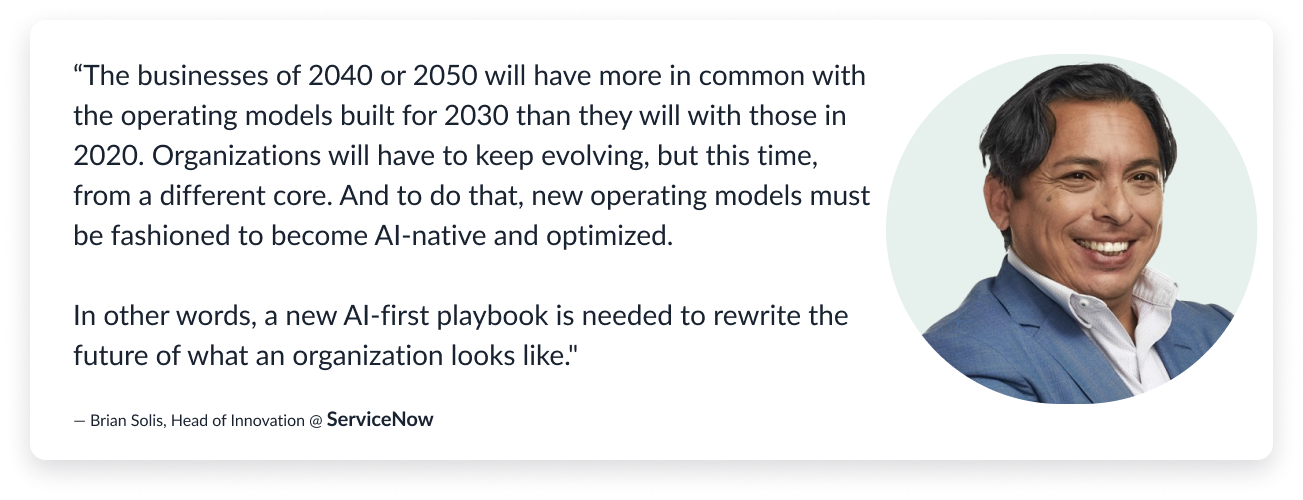
Salesforce is showing commitment to environmental sustainability through the introduction of Net Zero Cloud to help businesses manage and reduce their carbon emissions. These advancements illustrate the innovative strides both Salesforce and ServiceNow are making in shaping the future of CRM and service management.

Optimal Use Cases for Each Platform
When considering “salesforce vs servicenow,” it’s important to note that while either platform can be used for IT management, operations, or CRM optimization, each has its own specialties that the other lacks.
Salesforce excels in managing customer interactions, sales, and marketing to foster strong customer relationships. Its specialized tools for each aspect of customer engagement make it ideal for sales teams gaining visibility into the pipeline, marketing teams executing targeted campaigns, and organizations building community portals for collaboration.
ServiceNow specializes in automating internal operations, managing IT services, and boosting productivity across departments. Optimal use cases for ServiceNow include managing internal infrastructure, handling field service requests, and providing IT services to customers.
By understanding these optimal use cases, businesses can choose the platform that best fulfills their operational needs and objectives. Or, the savvy user will be able to make use of the best components of each platform with a fully-functional 2-way integrated workflow.
Navigating Common Challenges in Integration
Despite the benefits of a Salesforce and ServiceNow integration, businesses can encounter challenges if they’re not prepared:
Performance issues
Security vulnerabilities
Inefficient external calls
Potential performance degradation
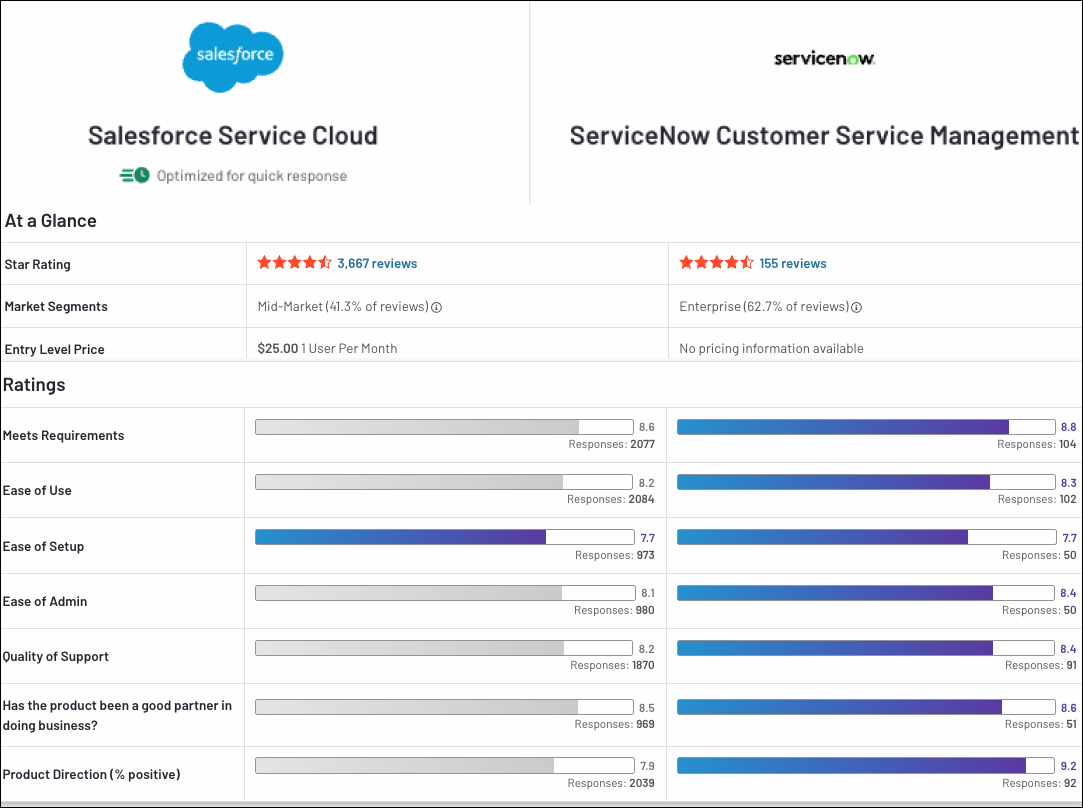
These challenges can hinder operations and expose businesses to risks. It is important to address these challenges and ensure a smooth integration process.
Inadequate integration strategies can result in costly technical debt and sunk costs, with companies often struggling to make the integration work efficiently. Businesses can mitigate these challenges by:
Developing a data synchronization strategy that includes data governance policies
Implementing data quality standards
Using integration tools capable of real-time synchronization
By navigating these common challenges, businesses can ensure successful and efficient integration.
Choosing the Right Integration Tool for Your Business
The selection of the right integration tool for Salesforce ServiceNow integration is a critical business decision. This requires a careful examination of the tool’s features, scalability, security, ease of use, and its compatibility with other applications.
Some key features to consider when choosing an integration tool are:
Data encryption
Two-factor authentication
Real-time alerts
Intelligent workflows
Security orchestration
Automated response engine
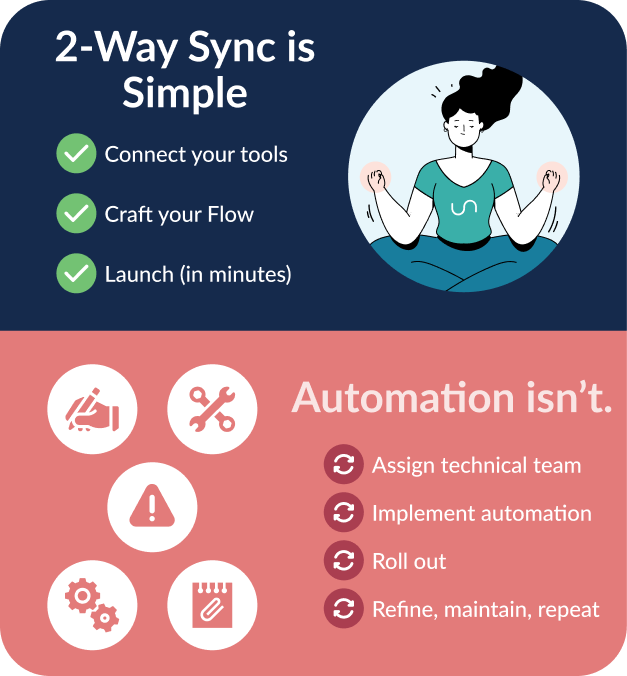
Both Salesforce and ServiceNow offer these critical security aspects, making them good options for integration.
These considerations will guide businesses in choosing an integration tool that not only facilitates seamless integration but also aligns with their unique business needs and operational requirements. With the right tool, businesses can fully leverage the benefits of Salesforce and ServiceNow integration.
Final Words
In conclusion, integrating Salesforce and ServiceNow can bring about transformative change in businesses. These powerful CRM platforms each offer unique features and functionalities that can enhance customer relations and streamline internal operations. By integrating these platforms, businesses can enjoy the best of both worlds, enhancing customer connections, and streamlining internal workflows.
The future of CRM and service management lies in continued innovation and integration. With the right tools and strategies, businesses can navigate common integration challenges and maximize efficiency through automation. The success stories of businesses that have effectively used Salesforce and ServiceNow integration serve as a testament to the transformative potential of these platforms. By choosing the right integration tool and navigating common integration challenges, businesses can ensure successful and efficient integration, ultimately boosting their performance and bottom line.
Frequently Asked Questions
Can you use ServiceNow as a CRM?
Yes, ServiceNow can be used as a CRM, as it contains features that allow it to act as a CRM and sales system, despite being primarily an ITSM software. It may not be as effective as a dedicated CRM, but it has some functionality in common with CRM systems.
Why is ServiceNow so popular?
ServiceNow is popular due to its versatility, customization options, and powerful features for automating workflows, managing incidents, and providing real-time visibility into IT operations. It enables businesses to tailor it to their specific needs, making it a highly sought-after platform.
What is Salesforce and ServiceNow in Accenture?
Salesforce FSL is a unified platform that connects the workforce, products, and customers into one platform to streamline field service operations, while ServiceNow FSM is an integrated system of action that connects customers and employees to ensure exceptional customer experience in the field. Both platforms are used in Accenture’s operations to enhance field service management.
What is the purpose of ServiceNow?
ServiceNow serves as a platform for automating various management workflows in enterprises, specializing in IT service management, IT operations management, and IT business management. This allows businesses to fuel strategic growth and offer automated, user-friendly solutions for different operational areas (such as security operations, customer service management, human resources, facilities, and business applications).
Is ServiceNow the same as Salesforce?
No, ServiceNow is a cloud-based application platform (PaaS) service, while Salesforce is a cloud-based CRM platform. ServiceNow serves as a platform for creating custom applications and automating workflow, while Salesforce is primarily focused on customer relationship management.
What are some of the core features of Salesforce?
This powerhouse platform offers a variety of robust customer relationship management features such as lead management, sales and marketing management, and reporting that cater to a range of customer needs. Businesses can leverage its CRM features, like lead scoring, nurturing, and crafting lead records from form submissions, to convert leads into sales and manage opportunities.
Moreover, the customer relationship management platform facilitates optimal customer service management, customer services, customer data, and contact management throughout the customer lifecycle, storing essential customer details and managing workflows across multiple teams to provide a seamless customer experience while addressing customer queries.
Sign up for Unito to sync ServiceNow and Salesforce
Try Unito for 14 days, absolutely free.
